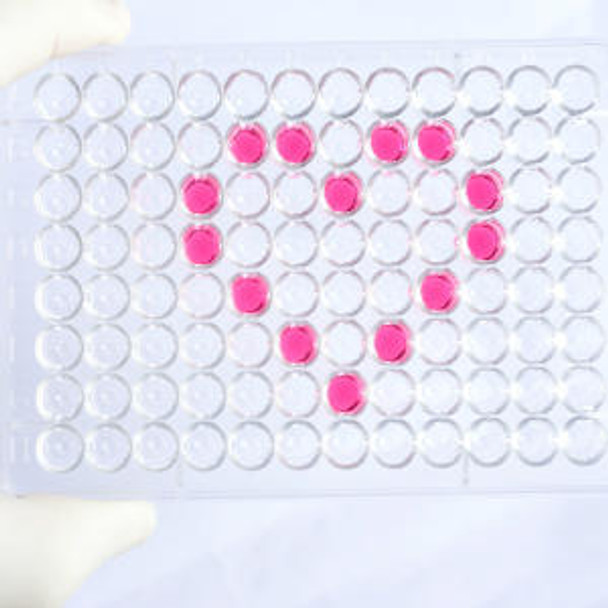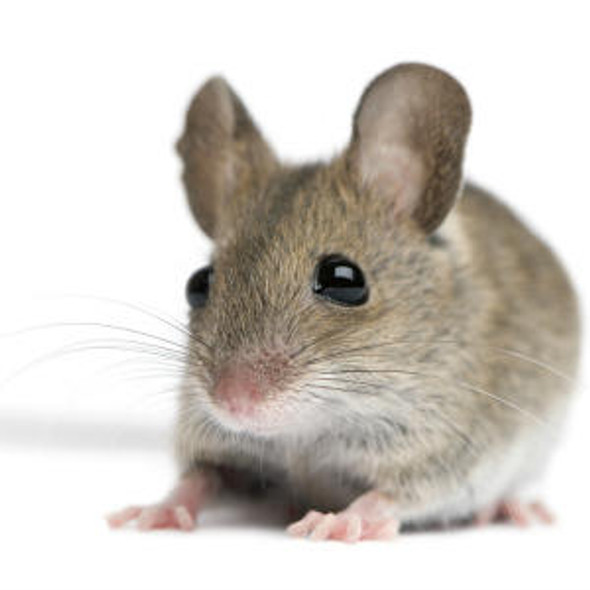Human Immunology ELISA Kits 7
Human Solute carrier family 2, facilitated glucose transporter member 1 (SLC2A1) ELISA Kit
- SKU:
- HUEB1223
- Product Type:
- ELISA Kit
- Size:
- 96 Assays
- Uniprot:
- P11166
- Range:
- 0.156-10 ng/mL
- ELISA Type:
- Sandwich
- Synonyms:
- SLC2A1, Solute carrier family 2, facilitated glucose transporter member 1
- Reactivity:
- Human
Description
| Product Name: | Human Solute carrier family 2, facilitated glucose transporter member 1 (SLC2A1) ELISA Kit |
| Product Code: | HUEB1223 |
| Alias: | Solute carrier family 2, facilitated glucose transporter member 1, Glucose transporter type 1, erythrocyte/brain, GLUT-1, HepG2 glucose transporter, SLC2A1, GLUT1 |
| Uniprot: | P11166 |
| Reactivity: | Human |
| Range: | 0.156-10 ng/mL |
| Detection Method: | Sandwich |
| Size: | 96 Assay |
| Storage: | Please see kit components below for exact storage details |
| Note: | For research use only |
| UniProt Protein Function: | GLUT1: an integral membrane protein that plays an important role in the glycolytic pathway by serving as a uniporter for glucose. One of 13 members of the human equilibrative glucose transport protein family. Transports a wide range of aldoses, including both pentoses and hexoses, and dehydroascorbic acid. Shown to transport water against an osmotic gradient. A receptor for the Human T-cell Leukemia virus (HTLV). Plays a role in the constitutive or basal uptake of glucose. Expressed at highest levels in proliferating cells of the early developing embryo, cells forming the blood tissue barriers, in human erythrocytes, astrocytes and in cardiac muscle. GLUT1 and GLUT3 are both essential for normal embryonic development. Is practically the only member of the GLUT family expressed on human red blood cells, where it comprises 10 - 20% of the integral membrane protein content. Several glycolytic proteins including the transporters GLUT1 and GLUT3, as well as multiple enzymes including HK2, PFKL, LDHA, ALDOA, ALDOC, PGK1, ENO1, PKM2, CA9 and PFKFB3 are induced in cancer cells by HIF-1 alpha. Polyps from Peutz-Jeghers patients exhibit up-regulated mTORC1 signaling, HIF-1alpha, and GLUT1 levels. Defects in GLUT1 are the cause of autosomal dominant GLUT1 deficiency syndrome, a blood-brain barrier glucose transport defect characterized by infantile seizures, delayed development, and acquired microcephaly. Defects also cause dystonia type 18, an exercise-induced paroxysmal dystonia/dyskinesia. Cytochalasin B binds to its inner surface, inhibiting its glucose transport activity with an IC50 of 0.44 uM. |
| UniProt Protein Details: | Protein type:Membrane protein, integral; Membrane protein, multi-pass; Transporter; Transporter, SLC family Chromosomal Location of Human Ortholog: 1p34.2 Cellular Component: cortical actin cytoskeleton; Golgi membrane; integral to plasma membrane; membrane; midbody; plasma membrane Molecular Function:D-glucose transmembrane transporter activity; dehydroascorbic acid transporter activity; glucose transmembrane transporter activity; identical protein binding; protein binding; protein self-association Biological Process: glucose transport; L-ascorbic acid metabolic process; lactose biosynthetic process; protein complex assembly; regulation of insulin secretion Disease: Stomatin-deficient Cryohydrocytosis With Neurologic Defects |
| NCBI Summary: | This gene encodes a major glucose transporter in the mammalian blood-brain barrier. The encoded protein is found primarily in the cell membrane and on the cell surface, where it can also function as a receptor for human T-cell leukemia virus (HTLV) I and II. Mutations in this gene have been found in a family with paroxysmal exertion-induced dyskinesia. [provided by RefSeq, Apr 2013] |
| UniProt Code: | P11166 |
| NCBI GenInfo Identifier: | 115502394 |
| NCBI Gene ID: | 6513 |
| NCBI Accession: | P11166.2 |
| UniProt Secondary Accession: | P11166,O75535, Q147X2, A8K9S6, B2R620, D3DPX0, |
| UniProt Related Accession: | P11166 |
| Molecular Weight: | 54,084 Da |
| NCBI Full Name: | Solute carrier family 2, facilitated glucose transporter member 1 |
| NCBI Synonym Full Names: | solute carrier family 2 member 1 |
| NCBI Official Symbol: | SLC2A1 |
| NCBI Official Synonym Symbols: | CSE; PED; DYT9; GLUT; DYT17; DYT18; EIG12; GLUT1; HTLVR; GLUT-1; SDCHCN; GLUT1DS |
| NCBI Protein Information: | solute carrier family 2, facilitated glucose transporter member 1 |
| UniProt Protein Name: | Solute carrier family 2, facilitated glucose transporter member 1 |
| UniProt Synonym Protein Names: | Glucose transporter type 1, erythrocyte/brain; GLUT-1; HepG2 glucose transporter |
| Protein Family: | Glucose transporter |
| UniProt Gene Name: | SLC2A1 |
| Component | Quantity (96 Assays) | Storage |
| ELISA Microplate (Dismountable) | 8×12 strips | -20°C |
| Lyophilized Standard | 2 | -20°C |
| Sample Diluent | 20ml | -20°C |
| Assay Diluent A | 10mL | -20°C |
| Assay Diluent B | 10mL | -20°C |
| Detection Reagent A | 120µL | -20°C |
| Detection Reagent B | 120µL | -20°C |
| Wash Buffer | 30mL | 4°C |
| Substrate | 10mL | 4°C |
| Stop Solution | 10mL | 4°C |
| Plate Sealer | 5 | - |
Other materials and equipment required:
- Microplate reader with 450 nm wavelength filter
- Multichannel Pipette, Pipette, microcentrifuge tubes and disposable pipette tips
- Incubator
- Deionized or distilled water
- Absorbent paper
- Buffer resevoir
*Note: The below protocol is a sample protocol. Protocols are specific to each batch/lot. For the correct instructions please follow the protocol included in your kit.
Allow all reagents to reach room temperature (Please do not dissolve the reagents at 37°C directly). All the reagents should be mixed thoroughly by gently swirling before pipetting. Avoid foaming. Keep appropriate numbers of strips for 1 experiment and remove extra strips from microtiter plate. Removed strips should be resealed and stored at -20°C until the kits expiry date. Prepare all reagents, working standards and samples as directed in the previous sections. Please predict the concentration before assaying. If values for these are not within the range of the standard curve, users must determine the optimal sample dilutions for their experiments. We recommend running all samples in duplicate.
| Step | |
| 1. | Add Sample: Add 100µL of Standard, Blank, or Sample per well. The blank well is added with Sample diluent. Solutions are added to the bottom of micro ELISA plate well, avoid inside wall touching and foaming as possible. Mix it gently. Cover the plate with sealer we provided. Incubate for 120 minutes at 37°C. |
| 2. | Remove the liquid from each well, don't wash. Add 100µL of Detection Reagent A working solution to each well. Cover with the Plate sealer. Gently tap the plate to ensure thorough mixing. Incubate for 1 hour at 37°C. Note: if Detection Reagent A appears cloudy warm to room temperature until solution is uniform. |
| 3. | Aspirate each well and wash, repeating the process three times. Wash by filling each well with Wash Buffer (approximately 400µL) (a squirt bottle, multi-channel pipette,manifold dispenser or automated washer are needed). Complete removal of liquid at each step is essential. After the last wash, completely remove remaining Wash Buffer by aspirating or decanting. Invert the plate and pat it against thick clean absorbent paper. |
| 4. | Add 100µL of Detection Reagent B working solution to each well. Cover with the Plate sealer. Incubate for 60 minutes at 37°C. |
| 5. | Repeat the wash process for five times as conducted in step 3. |
| 6. | Add 90µL of Substrate Solution to each well. Cover with a new Plate sealer and incubate for 10-20 minutes at 37°C. Protect the plate from light. The reaction time can be shortened or extended according to the actual color change, but this should not exceed more than 30 minutes. When apparent gradient appears in standard wells, user should terminatethe reaction. |
| 7. | Add 50µL of Stop Solution to each well. If color change does not appear uniform, gently tap the plate to ensure thorough mixing. |
| 8. | Determine the optical density (OD value) of each well at once, using a micro-plate reader set to 450 nm. User should open the micro-plate reader in advance, preheat the instrument, and set the testing parameters. |
| 9. | After experiment, store all reagents according to the specified storage temperature respectively until their expiry. |
When carrying out an ELISA assay it is important to prepare your samples in order to achieve the best possible results. Below we have a list of procedures for the preparation of samples for different sample types.
| Sample Type | Protocol |
| Serum | If using serum separator tubes, allow samples to clot for 30 minutes at room temperature. Centrifuge for 10 minutes at 1,000x g. Collect the serum fraction and assay promptly or aliquot and store the samples at -80°C. Avoid multiple freeze-thaw cycles. If serum separator tubes are not being used, allow samples to clot overnight at 2-8°C. Centrifuge for 10 minutes at 1,000x g. Remove serum and assay promptly or aliquot and store the samples at -80°C. Avoid multiple freeze-thaw cycles. |
| Plasma | Collect plasma using EDTA or heparin as an anticoagulant. Centrifuge samples at 4°C for 15 mins at 1000 × g within 30 mins of collection. Collect the plasma fraction and assay promptly or aliquot and store the samples at -80°C. Avoid multiple freeze-thaw cycles. Note: Over haemolysed samples are not suitable for use with this kit. |
| Urine & Cerebrospinal Fluid | Collect the urine (mid-stream) in a sterile container, centrifuge for 20 mins at 2000-3000 rpm. Remove supernatant and assay immediately. If any precipitation is detected, repeat the centrifugation step. A similar protocol can be used for cerebrospinal fluid. |
| Cell culture supernatant | Collect the cell culture media by pipette, followed by centrifugation at 4°C for 20 mins at 1500 rpm. Collect the clear supernatant and assay immediately. |
| Cell lysates | Solubilize cells in lysis buffer and allow to sit on ice for 30 minutes. Centrifuge tubes at 14,000 x g for 5 minutes to remove insoluble material. Aliquot the supernatant into a new tube and discard the remaining whole cell extract. Quantify total protein concentration using a total protein assay. Assay immediately or aliquot and store at ≤ -20 °C. |
| Tissue homogenates | The preparation of tissue homogenates will vary depending upon tissue type. Rinse tissue with 1X PBS to remove excess blood & homogenize in 20ml of 1X PBS (including protease inhibitors) and store overnight at ≤ -20°C. Two freeze-thaw cycles are required to break the cell membranes. To further disrupt the cell membranes you can sonicate the samples. Centrifuge homogenates for 5 mins at 5000xg. Remove the supernatant and assay immediately or aliquot and store at -20°C or -80°C. |
| Tissue lysates | Rinse tissue with PBS, cut into 1-2 mm pieces, and homogenize with a tissue homogenizer in PBS. Add an equal volume of RIPA buffer containing protease inhibitors and lyse tissues at room temperature for 30 minutes with gentle agitation. Centrifuge to remove debris. Quantify total protein concentration using a total protein assay. Assay immediately or aliquot and store at ≤ -20 °C. |
| Breast Milk | Collect milk samples and centrifuge at 10,000 x g for 60 min at 4°C. Aliquot the supernatant and assay. For long term use, store samples at -80°C. Minimize freeze/thaw cycles. |






